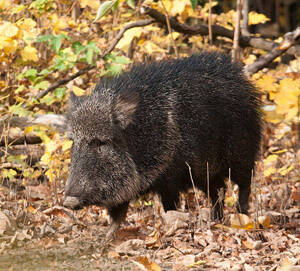
The Chacoan Peccary (Catagonus wagneri) has no subspecies. When it was first discovered, there were only some fossils of the Chacoan Peccary and it was thought to be extinct. It was not until 1975 that they were found alive in the Grand Chaco Plain. The indigenous people are very familiar with them....

Collared Peccary (scientific name: Pecari tajacu) has 14 subspecies. Peccary, pronounced tuān, means wild boar. Peccary, as the name suggests, is a wild boar in the West. In biological taxonomy, both peccaries and pigs belong to the order Artiodactyla, but they belong to different families.The coll...
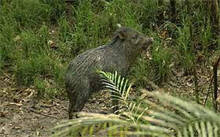
Pecari maximus (scientific name: Pecari maximus) is also known as Pecari Gigante in English. It has no subspecies.The giant peccary is a large forest-dwelling wild boar first discovered in 2000 by Dutch naturalist Marc van Roosmalen in the Rio Aripuan Basin in Brazil. In 2003, he and Lothar Frenz, a...
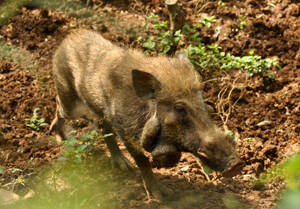
Javan wild boar (scientific name: Sus verrucosus) foreign name Javan pig, Sanglier pustule, there are 2 subspecies.Javan wild boars are mostly nocturnal, and damage to rice fields and crops occurs almost exclusively at night. These animals are not very social. Females and their young may be found to...
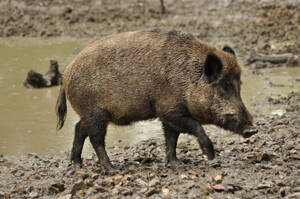
Eurasian wild boar (scientific name: Sus scrofa) English Wild Boar, Eurasian Wild Pig, Ryukyu Islands Wild Pig, French Sanglier, Sanglier d'Eurasie, Spanish Jabalí, German Schwarzwild, Wildschwein, Mongolian Zerleg Gakhai, is a medium-sized mammal with 20 subspecies.Eurasian wild boar females a...
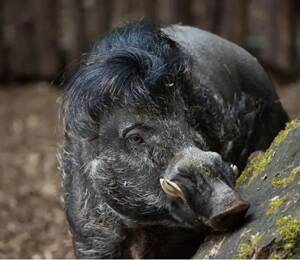
Philippine Warty Pig (scientific name: Sus philippensis) has two subspecies.Philippine Warty Pig is more active at night, but is also active during the day. It appears in pairs during the breeding season, usually forming small groups of 7-12. It is a generally timid and cautious animal that can defe...

Mindoro wild boar (scientific name: Sus oliveri) is also known as Oliver's Warty Pig. There is no subspecies.There are few direct records of observations of Mindoro wild boars in the wild, and the habitat preferences of the species remain mostly unclear. There are probably remnant forests and sc...
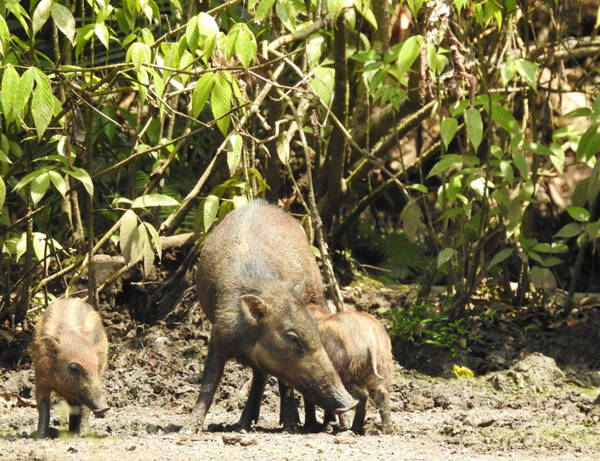
Sulawesi Warty Pig (scientific name: Sus celebensis) has three subspecies.The Sulawesi wild boar has a home range of 500-1000 hectares for females and 1000-2000 hectares for males. As mammals, they communicate using some combination of vision, hearing, touch, and emitted chemical scents. They are so...

Visayan warty pig (scientific name: Sus cebifrons) is a species endemic to the Visayas Islands in the Philippines.Reports on the activity patterns of Visayan wild pigs in undisturbed areas are rare, as any such activity is deep in remote forest areas with rugged terrain, making even casual observati...
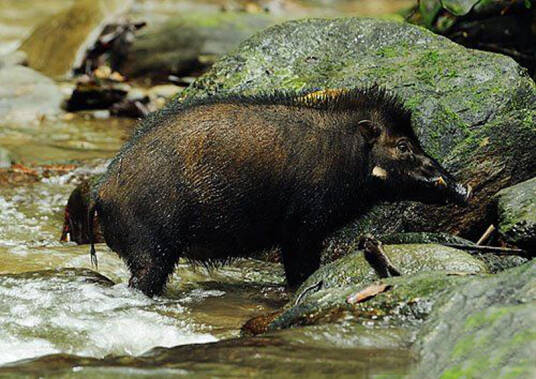
Indochinese wild boar (scientific name: Sus bucculentus) is also known as Indo-chinese Warty Pig, Heude's Pig, Vietnam Warty Pig, and has no subspecies.The Indochinese wild boar was described in two skulls collected in southern Vietnam in 1892, allegedly from near Ho Chi Minh City in the Dong Na...

Porcula salvania (Pygmy Hog in English, Sanglier nain, Sanglier pygmée in French, Jabalí Enano, Jabalí Pigmeo in Spanish, Nal Gahori, Takuri Borah in Assamese, Sano Banel in Nepali) is the only animal in the Suidae family and the Porcula genus. It is the smallest wild boar.Jizhu is a non-territor...
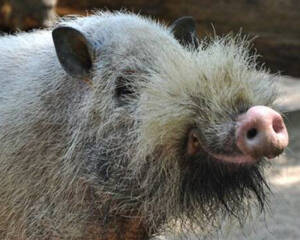
Borneo Bearded Pig (scientific name: Sus barbatus) is also known as Bearded Pig and Western Bearded Pig in foreign languages. It has two subspecies.The Eurasian wild boar (Sus scrofa) shares the Bornean bearded pig's range in Malaya and Sumatra, but the Eurasian wild boar is smaller and lacks th...
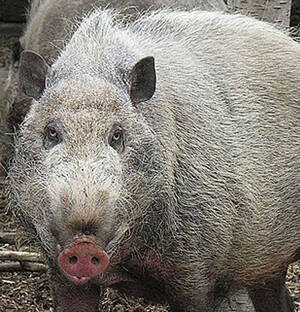
Palawan Bearded Pig (Sus ahoenobarbus) has no subspecies. The Palawan Bearded Pig is similar to the Borneo Bearded Pig and was once a subspecies of the Borneo Bearded Pig, but its size is significantly smaller than the Borneo Bearded Pig distributed in Indonesia. The Palawan Bearded Pig is different...
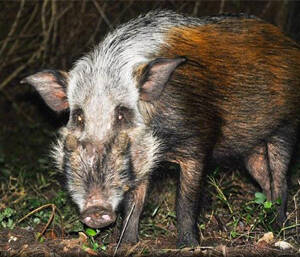
Masked wild boar (scientific name: Potamochoerus larvatus) is also known as Bushpig in English. There are 6 subspecies.Masked wild boar is a resident animal and vigorously protects its territory. It is mainly active at night. This behavior is related to the ambient temperature, with more diurnal act...

Red River Hog (scientific name: Potamochoerus porcus) is also known as Red River Hog, and has no subspecies.Red River Hog is a social animal. Most live in groups of 3-6, and there are groups of up to 11. Large groups of more than 100 animals have been recorded. In most cases, there is a dominant adu...
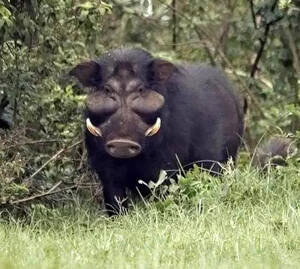
The Forest Hog (Hylochoerus meinertzhageni), also known as the Forest Hog in English, has three subspecies and is the largest pig. The species name "meinertzhageni" of the Forest Hog is derived from the surname of Colonel Richard Meinertzhagen, a British officer and zoologist. He was the f...
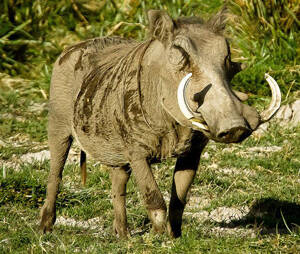
African warthog (scientific name: Phacochoerus africanus) is called Common Warthog in foreign language, and there are 4 subspecies.African warthog is a highly social animal. They often form small family groups, usually consisting of one or more female warthogs and their young. Single adult male wart...
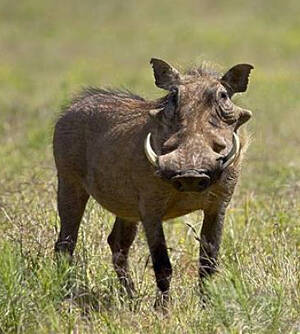
Desert Warthog (scientific name: Phacochoerus aethiopicus) has two subspecies.Desert Warthogs seem to be most active during the day, even in the hottest weather. They spend the night in caves as a family unit. They raid crops seasonally in the valleys of southern Somalia. Warthogs are diurnal animal...
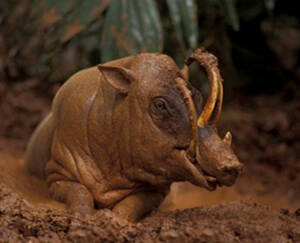
Togian Babirusa (scientific name: Babyrousa togeanensis) is called Togian Islands Babirusa in foreign language, and has no subspecies.Male Togian Babirusa usually live alone, while females and young Babirusa form family groups, sometimes up to 11 of them take mud baths together in the mud. The speci...
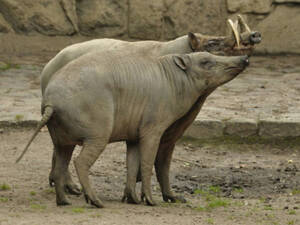
Sulawesi Babirusa (scientific name: Babyrousa celebensis) is called Kalowatan in foreign language, and has no subspecies.Sulawesi Babirusa consists of small groups of one or two adult females and their offspring, most of which are females with young animals. Groups rarely exceed 5, but groups of up...